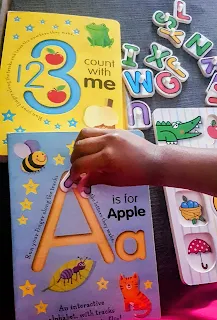Search This Blog
Learning ideas for parents and caregivers educating toddlers and little homeschoolers!
Featured
- Get link
- X
- Other Apps
PreSchool Learning Fun at Home!
As parents, we often wonder about the best way to introduce our young children to the world of learning. With so many skills to cover, from shapes and colors to reading and writing, it can feel overwhelming to know where to start.
There is, however, a logical sequence that can guide us through this educational journey, ensuring that children build a strong foundation for future learning.
In this blog post, we will explore the order in which parents can teach their young children shapes, colors, numbers, letters, reading, and writing, providing explanations and examples along the way.
1. Shapes and Colors
Why Start Here? Shapes and colors are fundamental concepts that lay the groundwork for understanding more complex mathematical and linguistic concepts later on.
 |
How to Teach? Begin by introducing basic shapes such as circles, squares, triangles, and rectangles. Use everyday objects and activities to reinforce shape recognition, such as pointing out the round shape of a clock or the square shape of a book.
Here are 24 Fun Learning Activities to help young children learn their shapes!
2. Numbers
Why Next? Understanding numbers is essential for developing mathematical skills and concepts.
How to Teach? Start with counting objects in the environment and progress to counting aloud together. Use visual aids like number charts and counting blocks to help children grasp numerical concepts. Introduce basic arithmetic concepts such as addition and subtraction through hands-on activities and games.
Here are some fun hands on counting activites your little one might enjoy.
3. Letters
Why Introduce Letters? Learning letters is the foundation for literacy and language development.
How to Teach? Begin by teaching the alphabet through songs, books, and interactive games. Help children recognize and write individual letters using tracing activities and letter formation games. Encourage letter-sound correspondence by associating each letter with its corresponding sound.
Learn more about teaching children their letters according to their learning style.
4. Reading
Why Reading Comes Next? Once children have a basic understanding of letters and sounds, they can begin to decode words and develop reading fluency.
How to Teach? Start with simple, repetitive books with simple illustrations. Encourage children to sound out words and use context clues to understand the meaning of the text. Reading together regularly fosters a love for books and strengthens reading skills.
Here are some more tips for teaching your young child how to read.
5. Writing
Why Develop Writing Skills? Writing is a vital communication skill that allows children to express their thoughts and ideas.
How to Teach? Provide opportunities for children to practice writing by making different types of lines horizontal, diagonal, vertical, squiggles and shapes. These basic markings while they may appear pointless at first glance are the foundation for tracing letters, forming words, and eventually writing sentences.
Encourage creativity through storytelling and journaling activities. Model writing behaviors and provide constructive feedback to support children as they develop their writing skills.
Here are some fun simple writing activities your little one might enjoy.
Take Away
By following this sequential approach to early childhood education, parents can lay a solid foundation for their children's future academic success. Starting with shapes and colors, progressing to numbers, letters, reading, and writing, each step builds upon the previous one, preparing children for more advanced learning experiences.
By providing fun learning activities, modeling behaviors, and offering encouragement and support, parents play a crucial role in their children's early educational journey.
Remember, every child learns at their own pace, so be patient and celebrate each milestone along the way. Together, we can empower our children to become lifelong learners!
- Get link
- X
- Other Apps
Popular Posts
The Wild Robot Movie vs. The Wild Robot Book
- Get link
- X
- Other Apps







Comments
Post a Comment